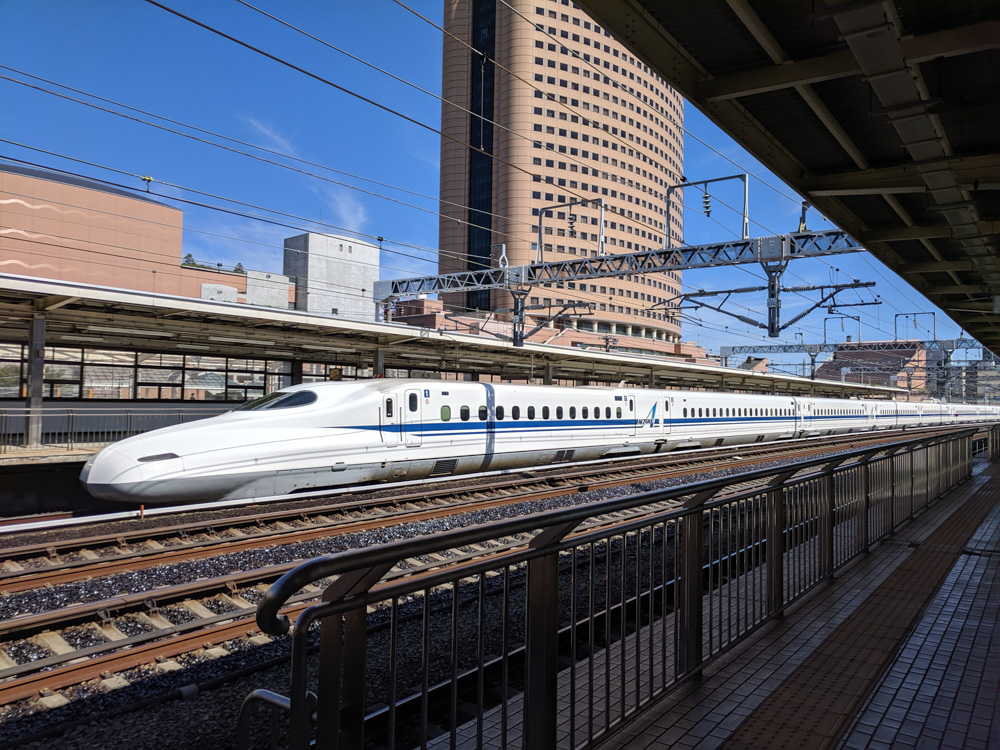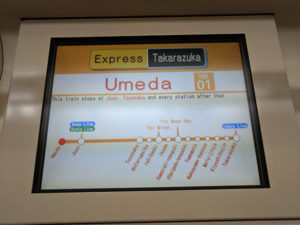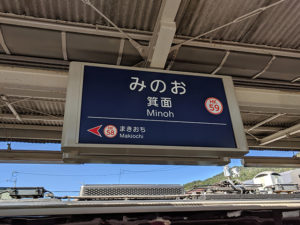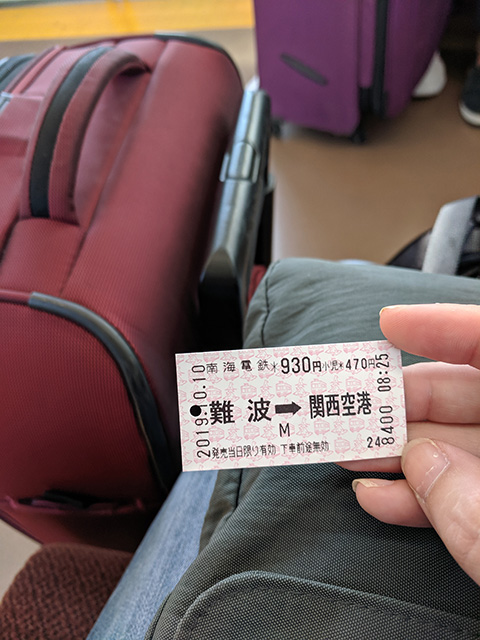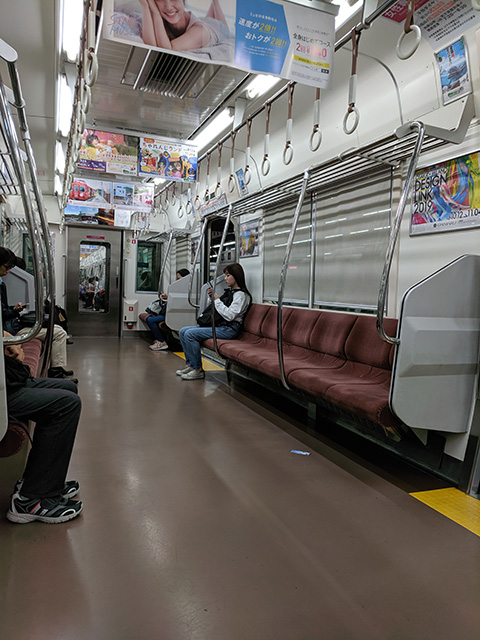During our trip planning I did a ton of research on the JR Pass as lots of travel sites recommend it. The 7-day pass would have been the best option for us but at 29,650¥ (~$273 USD) it’s not cheap. And once I mapped out our itinerary, it became clear the pass would not end up being a good value for us.
Below is the total amount of money we spent on travel in Japan:
JR Lines (covered by the JR pass):
Tokyo > Hamamatsu: 16,880¥
Hamamatsu >< Aino: 1,680¥
Hamamatsu > Kyoto: 16,880¥
Kyoto >< Fushimi Inari Taisha: 840¥
Kyoto > Osaka: 1260¥
Osaka > KIX airport: 1860¥
Total: 19,700¥ pp ($181.50 USD)
Subway / Bus / Local Trains (not covered by the JR pass):
Narita Express Bus > Tokyo Station: 2,000¥
Tokyo Subway 72-hour ticket: 3,000¥
Kyoto 2-day bus and subway ticket: 3,400¥
Osaka 1-day metro and bus card: 1,600¥
Osaka >< Minoo: 540¥
Total: 5,270¥ pp ($48.55 USD)
Grand Total per person: 24,970¥ ($230 USD)
I highly recommend using the HyperDia website to plan your routing – it will help give you an accurate cost estimate to decide what option is best for you.
We had a range of experiences obtaining various passes and tickets, summarized below by city.
Tokyo
The express train (JR line) stopped running before we made it through customs at Narita airport so we used the Kensai Express bus instead. The bus kiosk closes at 10pm (after that you can buy tickets on the bus, cash only) and we got two seats together on the 9:50pm bus… right behind a crying baby. Oh well, earplugs to the rescue! Our trip was an uneventful 55 minutes to the drop-off point on the northeast side of Tokyo Station, and from there we easily navigated the 15 minute walk to our hotel.
The next morning, we found an ATM and set off to purchase a 72-hour metro pass. This process was more difficult than it needed to be as there are only a few stations in Tokyo that sell this pass. And it took some effort to locate the special office (near exit E1, for the record) in the expansive Otemachi station so someone could physically check our passports for the visitor’s stamp. There was only one guy working and a long line behind us when we left. This metro pass, however, was by far the best value of the trip!
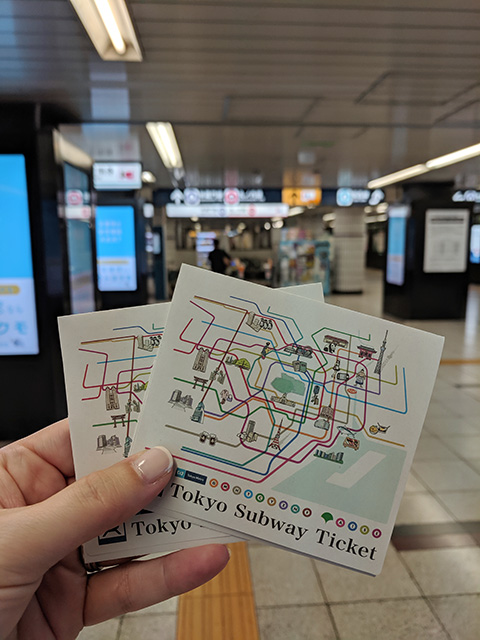
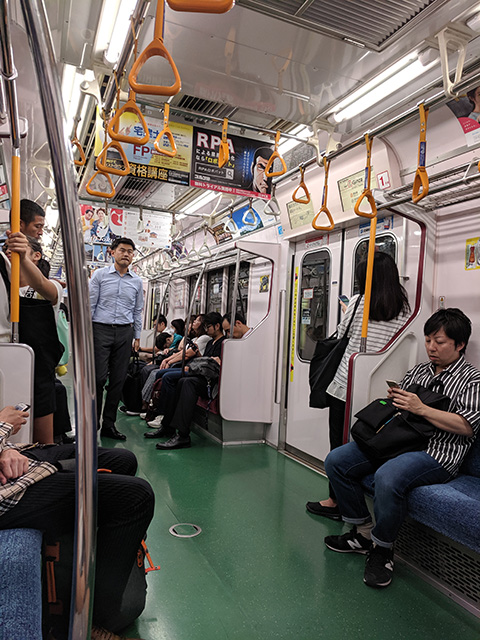
Buying our JR tickets to Hamamatsu was easy. We went to Tokyo Station two days early in the mid-morning, so there was only a short wait and both staff members spoke enough English. Unfortunately there were signs stating you could only buy one ticket at a time due to World Cup congestion (?!?) so we had to return later to get our Hamamatsu to Kyoto tickets. [Aside: Although I forgot to ask about being on the Mt. Fuji side – the agent was awesome and booked us on the correct side. Unfortunately, Mt Fuji was clouded in. Boo!] We chose a smaller (less crowded) office for the second transaction and I’m glad I carefully wrote down all the details because it took a few minutes of back and forth with the agent to get the tickets we needed. It worked out totally fine in the end.
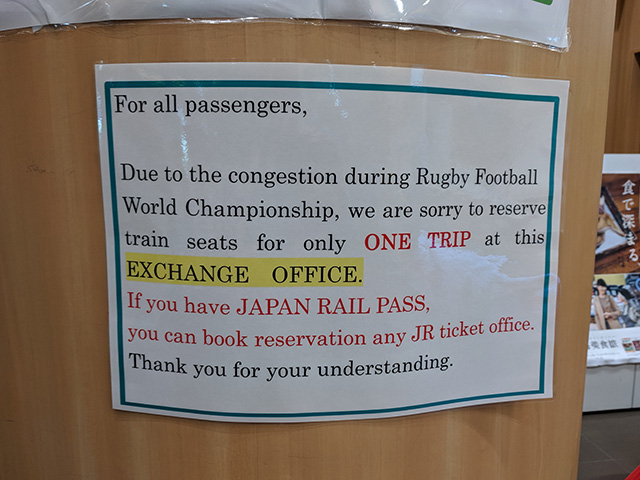
Hamamatsu
Arrived in Hamamatsu and immediately purchased our local return tickets to Aino for the rugby match that evening. The machine had English options and a fare map nearby so it was pretty easy to figure out, especially once Eric spotted the multiple person buttons to the left of the main screen. There were signs up everywhere telling people to buy their return tickets in advance because after the rugby game it was going to be a zoo. And that was true – we didn’t even scan our tickets leaving Aino that night so the volunteers could keep the crowds moving. For single use tickets, the machine ‘eats’ the ticket when you insert the ticket at your final destination. My guess is to reduce littering.
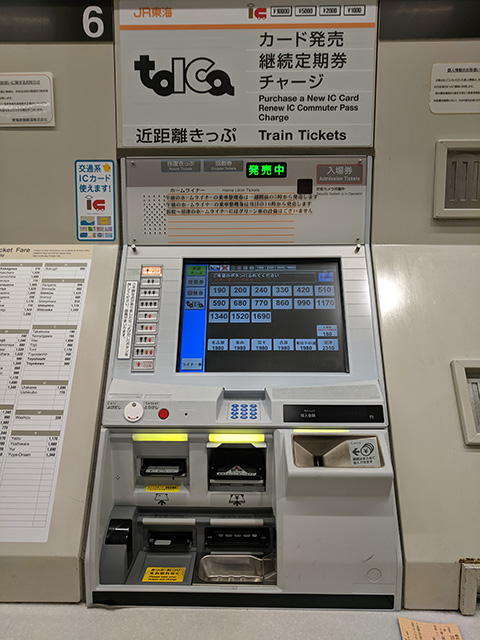
JR ticket machine in Hamamatsu station
For Hamamatsu to Kyoto we already had our ongoing tickets, so all we had to do the next morning was find our track. Signage was good and we easily found our train. This time we had two aisle seats. Not a big deal for the short, 68 minute trip to Kyoto.
Kyoto
Purchasing the 2-day travel pass was a breeze as there were clearly marked machines in the main station. I even helped another couple with the process. This card was good for both buses and the subway. With some help from Google maps we found buses to generally have a more direct way to get around the city… but like buses everywhere, they were rarely on time. After our 2-day pass expired we bought round-trip JR train tickets to get down to Fushimi Inari Taisha and then wandered closer to the hotel area on foot.
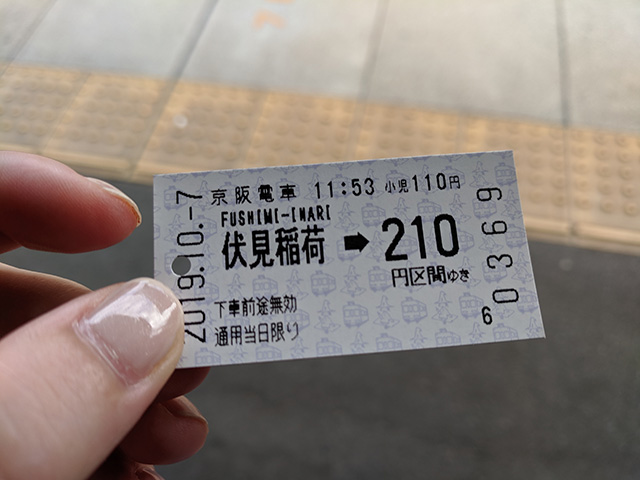
single use train ticket in Kyoto, the hole on the left side (and date) are to indicate it’s been used
When trying to leave for Osaka we discovered none of the local train ticket machines were in English – but there was an info desk nearby and they had a ready-made, laminated explanation on what buttons to press to get our tickets. Perfect! You typically insert your money, select a place name, then the price, then the number of tickets – we always knew the price going in but getting to that screen was sometimes a challenge.
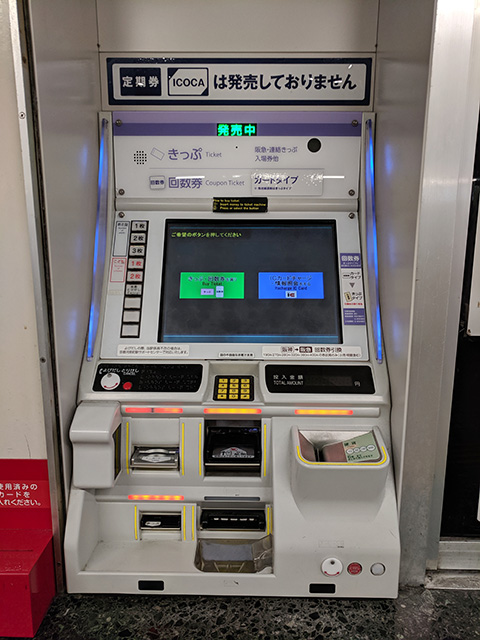
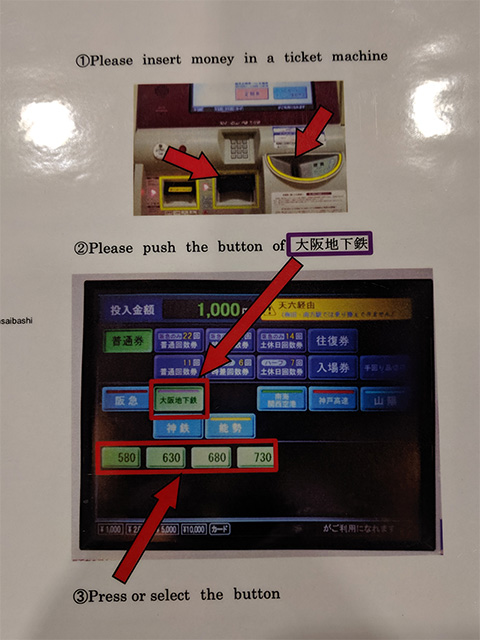
local train ticket machine; instructions on how to get from Kyoto to Osaka
Osaka
Our train ticket from Kyoto took us straight to our hotel area so we were on foot for the first day in Osaka. The second day, we wanted to venture out to Minoh Falls and although our plan was just to go there and back, we noticed a sign in the Namba station advertising an all-day metro ticket. Knowing we were already going to need 460¥ each to get to and from the falls, we decided to buy the all-day ticket so we could also visit the Osaka Castle and explore the Umeda area.
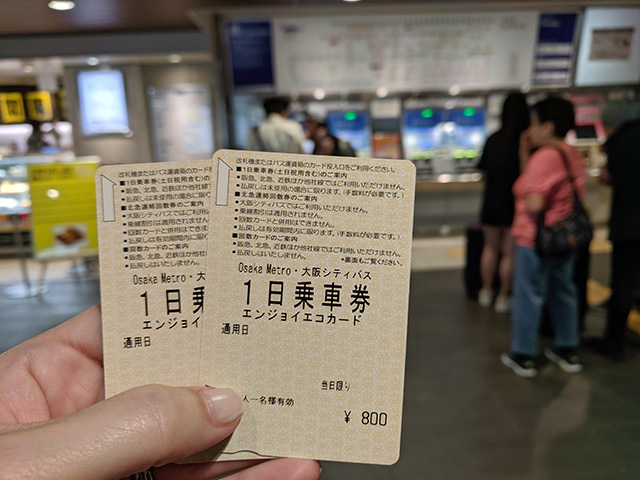
1-day metro and bus pass in Osaka
To get to the falls, you need to take the subway to Umeda, transfer to the local rail line, then do one more quick transfer at Ishibashi. Google was giving us fits trying to map out the route, but once broken up into smaller pieces (before and after Umeda) it was fine. Once again, the local train machines were not in English but we found someone to help us select the correct city name in Japanese.
Getting to the KIX airport was easy as those machines were in English (and uncrowded), yay!
All told, it was relatively easy to get our transportation sorted in these major cities and help was available when needed.
